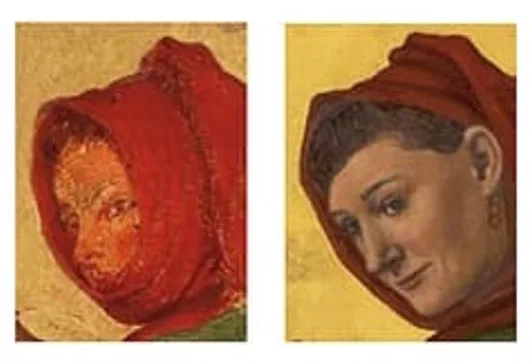The medieval clock tower, a stunning blend of artistry and scientific precision, stands as a testament to human ingenuity.
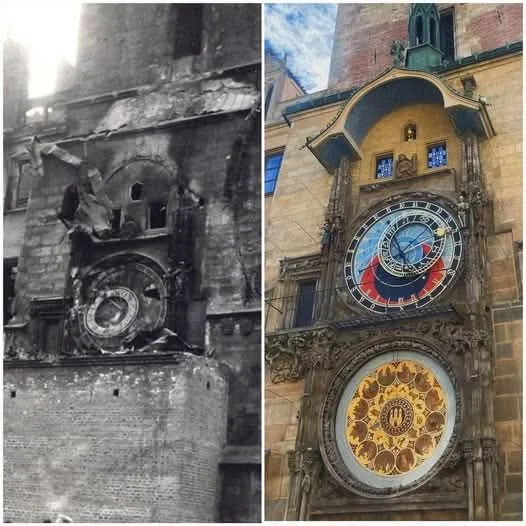
In Prague’s historic old city, one of the world’s most renowned astronomical clocks dominates a side street, featuring an intricate astronomical dial, a host of legends, and a recent controversy that invites exploration.
Constructed in the 14th century in Gothic style, the tower initially served to alert residents to dangers like fires or invasions, later becoming part of the Old Town Hall. By the early 15th century, it evolved with the addition of a clock and astronomical dial, followed by decorative statues and a calendar plate over time.
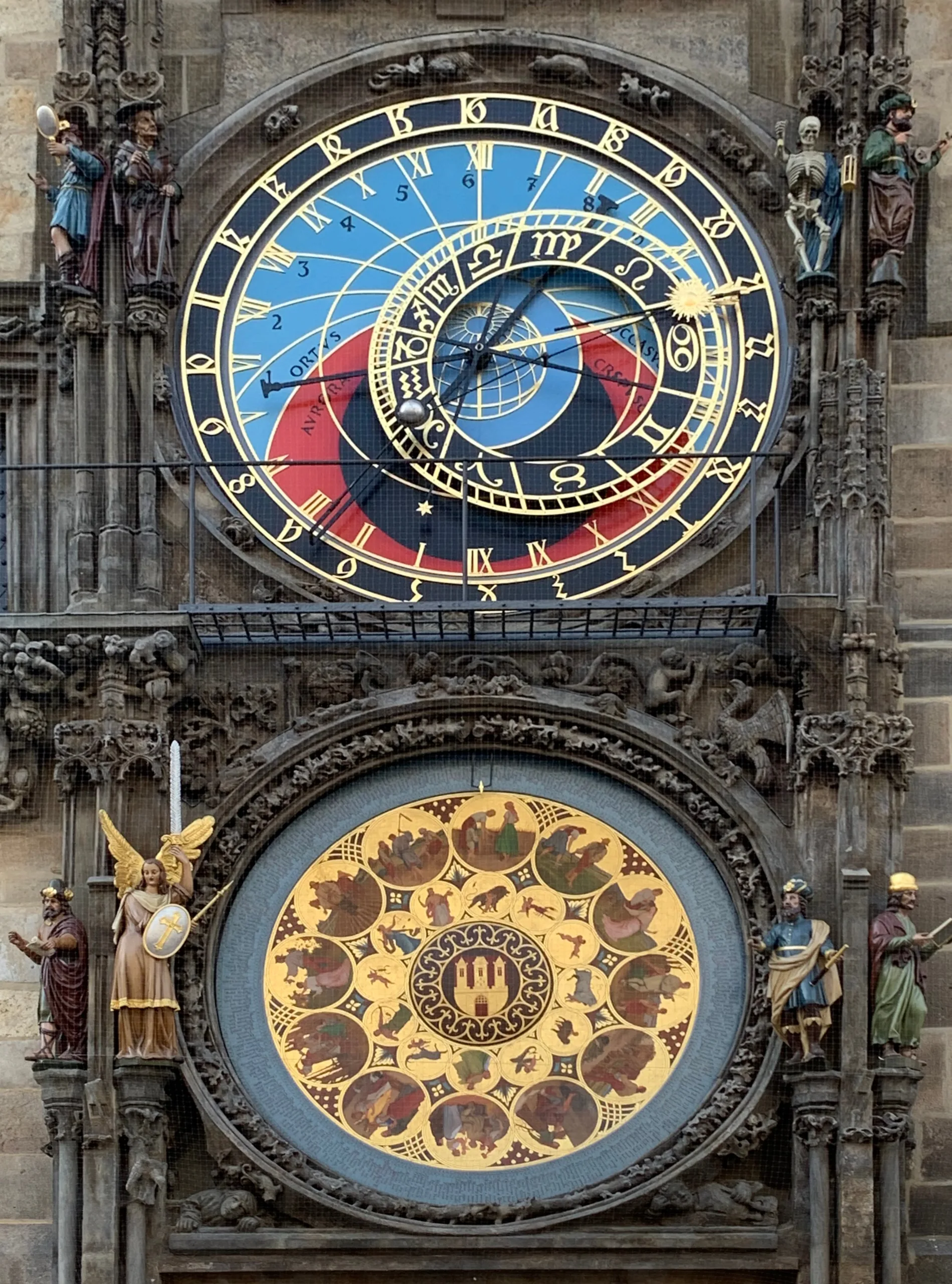
The astronomical clock has undergone numerous repairs over the centuries, with its gears and components carefully restored. On May 8, 1945, it narrowly escaped destruction during Nazi attacks in World War II, which burned parts of the Old Town Hall and nearby structures, including some wooden sculptures on the tower. After three years, local residents united to restore the machinery, replace sculptures, and set the Prague clock in motion again.
The Apostle Parade
Known locally as the Orloj (pronounced Or’-loy), the astronomical clock tower consists of three main parts: windows for the 12 Apostles, an astronomical dial, and a calendar dial. Let’s explore each in detail.
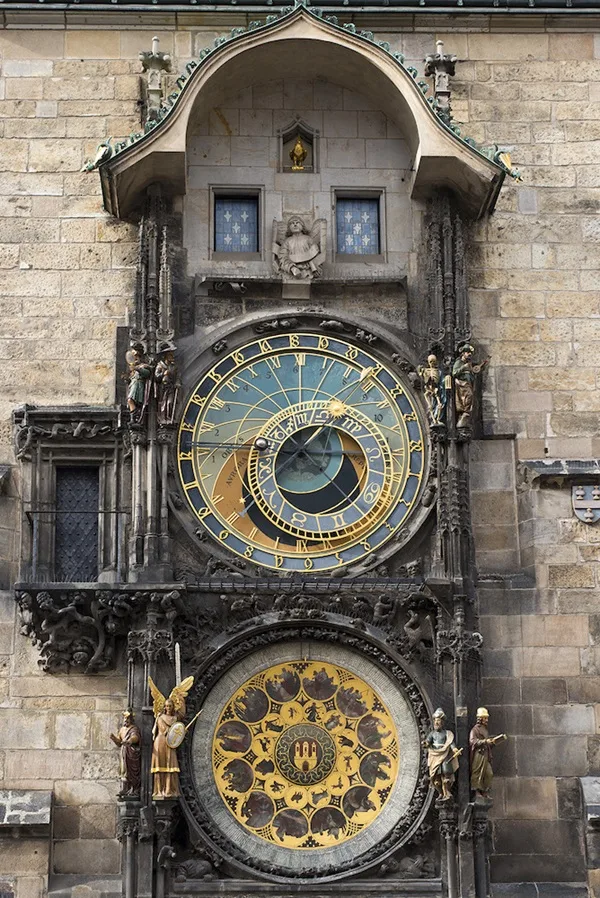
Every hour, the 12 Apostle figures emerge as two blue trapdoors open, allowing them to briefly face the town square. Visitors can purchase tickets for a self-guided tour to see the figures and the inner workings of the astrolabe up close, including a climb to the tower’s top to view the intricate gears that rotate the Apostles, displaying two at a time.

The Astronomical Clock
The astronomical dial, a complex astrolabe, is a mechanical model of celestial positions, historically used by navigators to determine latitude day or night. (This concept remains relevant: The author, as an Air Force navigator, used U.S. Naval Observatory almanac tables to locate the Sun, Moon, and Polaris with a sextant.)
The Prague clock displays the Sun, Moon, and local horizons. The Moon’s position is shown by a black hand with a silver or black orb, reflecting lunar phases—fully silver during a Full Moon and darkening as it progresses to a New Moon. The Moon moves counterclockwise, taking 24 hours, 50 minutes, and 28 seconds to complete one cycle, aligning with its daily rise time, which shifts nearly 50 minutes later each day.
The Sun, depicted as a radiant star, moves clockwise. The dial’s colors indicate time of day: blue for daylight, red for sunrise (left) and sunset (right), and black for nighttime, opposite the blue horizon.
The clock face shows four types of time, some familiar, others ancient. The outer edge, in deep blue, displays Bohemian (or Old Czech) time in Gothic numerals, where a 24-hour day begins at sunset, as used by Holy Roman Emperor Charles IV, indicated by the golden hand. Next is Central European Time (CET), shown in Roman numerals as two 12-hour cycles, also marked by the golden Sun hand. Third is Babylonian (or Arabian) time, shown in black Arabic numerals, dividing the day into 12 hours between sunrise and sunset. Finally, sidereal time, based on Earth’s rotation relative to a distant star (23 hours, 56 minutes), is indicated by a small golden star among the Roman numerals. This equips you to read time as they did in the Middle Ages or by the stars.
A smaller dial within the clock face represents the zodiac, divided into 12 signs, tracking the Sun’s position to indicate the current zodiac sign.
This astronomical masterpiece, built without modern technology, has operated for over 600 years, a remarkable achievement that fuels local pride in Prague’s celestial timekeeper.
The Calendar
The Orloj’s calendar plate features a blue outer circle with a Church calendar, listing 365 saints’ days. Inside are 12 symbolic monthly paintings, followed by smaller zodiac images, such as Aquarius, with Prague’s emblem at the center.
Myths and Legends
The Orloj is steeped in folklore. One tale warns that if the clock stops for too long, a skeleton figure near the astrolabe’s upper-right side signals misfortune for Czechs by nodding its head. To avert this, the clock must be restarted, and a boy born on New Year’s Eve must race from the Týn Church across the town square to the town hall before the clock’s final chime, neutralizing the skeleton’s ominous power.
Another legend offers hope. Above the clock, two small windows once lit a medieval jail. A knight awaiting execution saw a sparrow fly into the skeleton’s mouth as the clock struck the hour, becoming trapped until the skeleton’s jaws reopened an hour later, freeing the bird. Witnessing this, the knight believed he, too, would be freed—and he was, receiving a timely pardon. Thus, the skeleton, ringing a bell as a grim reaper figure, also symbolizes hope. Other figures—Vanity, Avarice, and Lust—move slightly each hour, ignoring the reaper, signaling their reluctance to face mortality.
Recent Controversy
While the clock’s original 15th-century components make up nearly 75% of its structure, repairs and restorations have sparked debate. In 2018, artist Stanislav Jirčík recreated the calendar dial based on Josef Mánes’ original paintings. In 2022, the heritage group Club for Old Prague filed a complaint with the Czech culture ministry, alleging the artist altered the zodiac calendar figures’ appearance, ages, skin tones, attire, and even genders, possibly as a prank, by including likenesses of friends and acquaintances. The controversy questioned the artist’s motives and the oversight by conservationists and Prague City Hall, as the changes went unnoticed for four years. Discussions continue about replacing the calendar wheel with a more faithful reproduction.

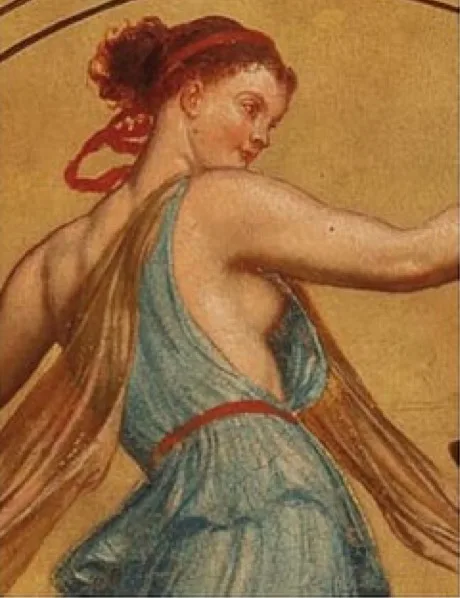

Despite the scandal, the Orloj remains a captivating landmark, blending art, engineering, and astronomy. Standing 230 feet (70 meters) tall, the tower offers breathtaking views of Prague. A tour of the Old Town Hall Tower and Orloj is a worthwhile investment of time for any visitor.
